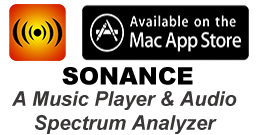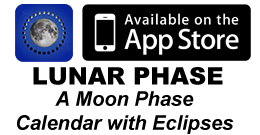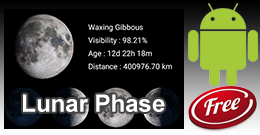|
Just getting started with your first web site ? This guide is a good place to start. I've been running eCommerce web sites for several years now,and I've learned a lot of good lessons, that I will share with you.
1) Domain Name
The first thing you need to do, is decide upon your domain name. i.e. www.fastertechnologies.com that we are using here. I suggest going out to GoDaddy.com  to check on the availablity of your name, and I personally would register your name there. It's $7.49 a year, compared to $35 a year with register.com. Some web hosting providers will register your domain name for you, usually included with their hosting package. I chose to register my domain name separately, I've also switched web hosting providers a couple of times too. I feel more comfortable with my domain name being registered seperately from the web hosting provider, so there are no issues with contracts if you are unhappy with the service. to check on the availablity of your name, and I personally would register your name there. It's $7.49 a year, compared to $35 a year with register.com. Some web hosting providers will register your domain name for you, usually included with their hosting package. I chose to register my domain name separately, I've also switched web hosting providers a couple of times too. I feel more comfortable with my domain name being registered seperately from the web hosting provider, so there are no issues with contracts if you are unhappy with the service.
2) Web Hosting Provider / Services
After you've registered your domain name, then it's time to find a web hosting provider. There are tons out there, some are more expensive than necessary. I've seen offers for $24.95 a month, for 100 megabytes of space, and 5 gigabytes of traffic. That's laughable. You should be looking for a provider that has a plan under $10.00 a month. It should have 200 megabytes or more space, and 8 to 10 gigabytes of traffic. Yahoo! Web Hosting starts at $12.95, 50 megabytes for files, 40 megabytes for email ( 90 in total ), 20 megabytes of bandwidth, plus the usual bells and whistles. Microsoft Frontpage support, PHP, ASP, & Perl modules installed.
3) Web Site Content / Pages
Web Site Content is the entire reason you are creating a website in the first place. You need to have a clear idea of what your website is all about. Then you need to build the pages of your site. I personally would recommend that you learn how to write HTML pages. It's not rocket science, and if you can write a book report, then you can write web pages. The HTML Home Page is the authority of the syntax of HTML. It's a complete reference as well. Back in the 90's I heard you could pay up to $1500 a page, so that's why I suggest you learn to do it yourself. Perhaps you might get some advise from a web designer, but if you're on a budget, I would limit it to that.
4) Build Your Pages So They Are Search Engine Friendly
If you want your site to get lots of visitors, making you pages search engine friendly is the primary way to get those visitors. We call this Search Engine Optimization ( SEO ). When a search engine scans your website, remember it's a computer program reading your pages, and not a human. These programs cannot "see" your graphics at all. So that means, the only way for the search engine to classify your site and pages, is through the text on them. It's important that each page have a title, so use the TITLE tag. Also use the "alt" tag on your graphics. Write some relevant descriptions or text that describes your site, to a visitor to a search engine. Remember the graphics are for the humans, and the text is for both humans and search engine programs.
5) Publishing Your Website / Pages
Well now that you have built your pages, I'd like to welcome you to the world of electonic publishing ! Yes, you are now a publisher of information, available to everyone on the internet. So how do you get your pages onto your website, so people can start reading them ? There are 2 "ways" to accomplish this. First is to manually transfer the files to your site via FTP ( File Transfer Protocol ), this is slow and prone to errors. The second and better way is to get a web publishing tool. I personally like Microsoft Frontpage. It's less than perfect, but it's fast, and that's my reason for keeping it around. Macromedia Dreamweaver MX is another excellent tool, however it is slower. Frontpage requires your server to have Frontpage Extensions installed, and it's this code that allows it to be fast. Dreamweaver has no such requirement, as it uses FTP to post the site files. It's FTP that makes dreamweaver slower. Frontpage is also a bit of a space hog, and will increase the amount of space you need for your site significantly. So ask yourself what's more important, the amount of space available, versus the time required to publish your site. I publish new content weekly, thus time is more important to me.
6) Getting "IN" the Search Engines
First add yourself to the Google.com crawler. No guarantees you will get in immediately, but I have not personally had any problems. After that use your favorite search engine to search for a "FREE WEBSITE SUBMITTER", you can pay for this if you want to, but there are some free ones to get you started. You have to pay to get into Yahoo's directory, but they now include results from their own comprehensive search tool, that they acquired when they bought Inktomi. You can submit you site for free as well at Yahoo.
7) Paying For Visitors / Traffic
You can pay for visitors, as well as tune your pages to the search engine mantra. Many sites offer Pay-Per-Click based traffic for your site. So they may show advertising information about your site many times a day, however you only pay for the people that click on that link and visit your site. This is a fast way to get traffic, while you are waiting for the search engines to list your site. I found it took about 2 months to start getting good free traffic from the search engines. I started with MIVA, they have bids as low as $0.10 ( 10 cents ) per click ( visitor ). It's the cheapest way to get some good traffic. I moved up to Yahoo! Sponsored Search. Yahoo! Sponsored Search however, shows their results on MSN and Yahoo, as well as others. So if advertising on the big search engines is affordable and appealing, sign up with Yahoo! Sponsored Search.Google Adwords is another popular option on par with the costs of Yahoo! Sponsored Search.
Recommended Reading
Brett Tabke's 26 steps to 15,000 visits a Day. Brett is the Webmaster at WebMasterWorld and The following is part of the Orielly Google Hacks Series of Books By Brett Tabke, Feb 2, 2002, Updated Feb 2, 2005. It is recommended by the GoogleGuy, google.com's representative on the webmaster forums.
|










|




